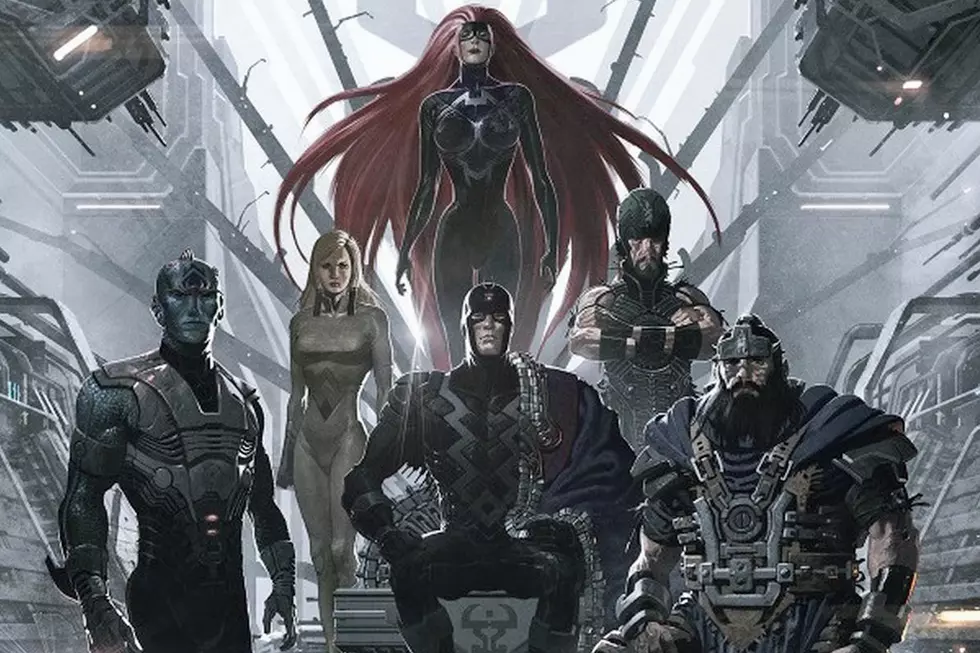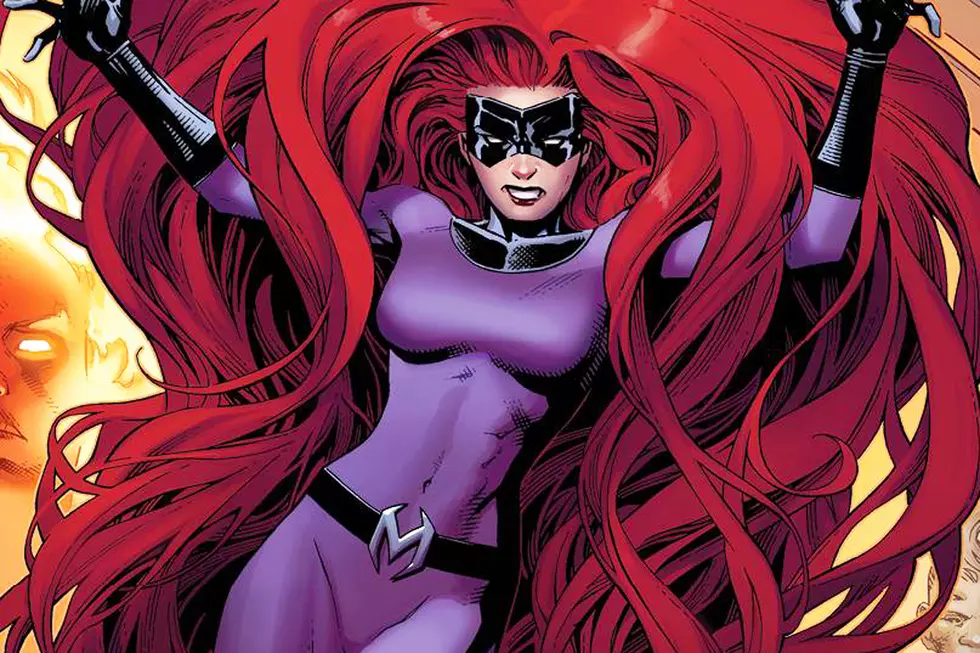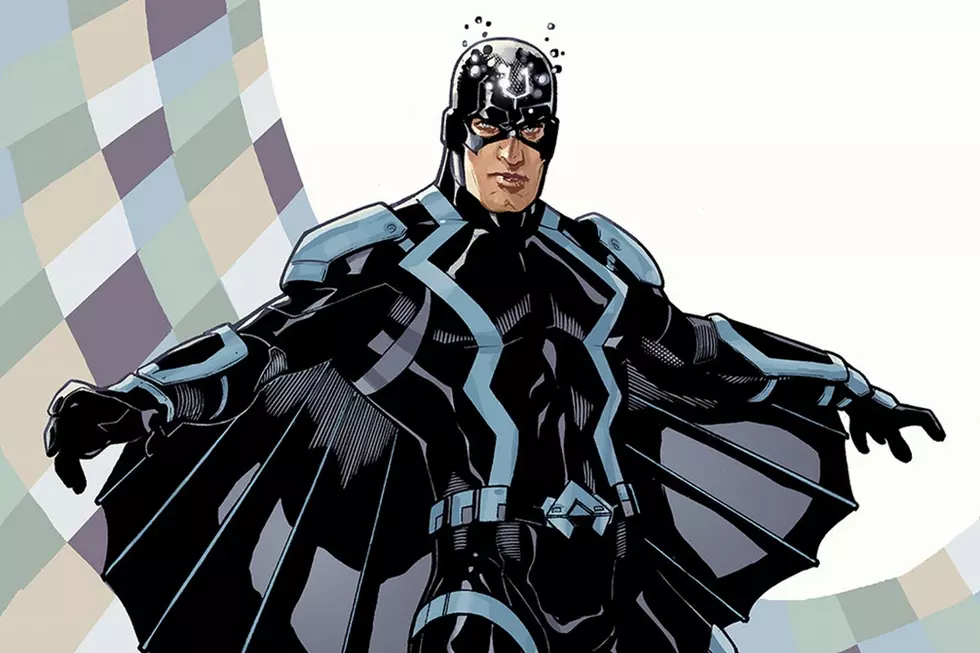![Oddities, Genocracies, And The Flaw: ‘Inhumans’ by Paul Jenkins and Jae Lee [Review]](http://townsquare.media/site/622/files/2013/09/Inhumans-lede.png?w=980&q=75)
Oddities, Genocracies, And The Flaw: ‘Inhumans’ by Paul Jenkins and Jae Lee [Review]
In advance of Matt Fraction and Joe Madureira's upcoming Inhuman series, this week Marvel released a new hardcover edition of the highly-regarded Inhumans by Paul Jenkins and Jae Lee. The twelve-issue Marvel Knights book, which won the 1999 Eisner Award for “Best New Series,” brought a new level of sophistication to the Lee/Kirby oddballs, activating in them the dormant metaphors of class separation and the coming-of-age ritual. At a time when superhero books seemed to be improving at an explosive rate, Inhumans was one of the most-talked-about comics on the stands; it’s certainly one of Marvel’s defining books of the era, and for most of its run, it was one of my favorites. But there’s something about it that keeps me from labeling it a classic. To quote Maximus the Mad, “there is a flaw.”
The first thing you’ll notice about Inhumans is Jae Lee’s bewildering artwork. Though his art always had a proclivity for expressiveness over realism, an endearing bizarreness, and a burgeoning sense of design, there was a primitive edge to his early work that took a while to wear off. Early in his career his characters could quite often be too over-the-top, rendered in a style redolent of contemporaries Simon Bisley and Bart Sears, popping veins and bulging muscles so engorged they cast oppressive black shadows that seemed capable of eclipsing all life on Earth. As you can see from the image below, that wasn't the case on Inhumans.
Looking back, it’s almost like his early art was made up of opposing characteristics; graceful and crude at the same time. As bulky and monstrous as his characters could be, anything that flowed -- water, capes, chains, hair -- was treated with finesse, drawn in smooth, confident, ribbon-like lines. Over the course of his own short-lived, eventually-abandoned Hellshock (he made his biggest leap on the second volume, forsaken after three issues), Lee seemed to experience a philosophical shift, evolving and refining his style considerably. By the time he got to Inhumans, he was paying much more attention to backgrounds and page design, sharpening up his prodigious use of blacks, and rendering his characters more gracefully and realistically while retaining his expressionist leanings.
In a way I think Inhumans is the first appearance of the Jae Lee we know today. His layouts are tricky and inventive, occasionally flirting with the ornate, full-page constructions that typify his current work. There’s not much to his backgrounds in the way of depth, but his use of negative space saturates the book with an appropriately otherworldly eeriness. And his characters, once defiant of both anatomy and PED regulations, are svelte and sinewy, captured in facial expressions that look like they could have come from candid photographs. He goes to town on the bizarrely mutated denizens of Attilan, filling the book with freaks that look like they just stepped off the set of Nightbreed, but remarkably human ones, with a range of realistic faces and soulful, impassioned eyes. There’s an almost oily quality to his work, a gliding elegance that inculcates in the Inhumans a gravity and grace. With ethereal, understated colors from Dan Kemp, Inhumans is wet with oddity.
The world that writer Paul Jenkins gives Lee to explore is a detailed, peculiar one that comes off remarkably real. Drawing on the existing history, he brings more depth and sophistication to Attilan than ever before, fleshing it out to build a world that’s convincingly alien and complex. At a time when the Bosnian and Rwandan genocides were still fresh in the collective consciousness, Jenkins found in the Inhumans fitting metaphors to explore the phenomenon of genetic segregation.
Inhuman society is a genocracy, where only those who are deemed genetically worthy are exposed to the mutagenic Terrigen Mists, which they believe reveals the true self. Once they emerge from the process, those with the most advanced and useful mutations are provided the most rights and respect; the genetically unworthy, or those whose mutations are not deemed useful, are ghettoized, sent to the lowest rungs of the caste system. The only ones lower than them are the Alpha Primitives, the engineered slave race of hominids who, although technically free, still live in the sub-structure of Attilan, laboring to power the city that despises them, because it’s the only thing they know how to do.
Into the machinery of this morally questionable caste system, Jenkins tosses a colossal monkey wrench: for the first time, the Terrigen Mists mutate a genetically superior Inhuman into an Alpha Primitive, and the whole system is forced to the edge of collapse.
In addition to these internal stresses, there are external forces to contend with. While the class dissension inside Attilan threatens to upend the established order, outsiders threaten the city itself. Aided by the sly and manipulative Maximus, who gleefully skirts the line between evil genius and absolute nutjob, mercenary forces attack the city. Attilan’s policy of isolation unnerves the U.N. and leaves the Inhumans to defend themselves, which they could easily do, if only Black Bolt would let them. Instead, the impenetrable king decrees a strict strategy of inaction, refusing to allow any citizen to attack the intruders.
Jenkins creates a remarkable tension in the story, drawing conflict out of every area. While the lower classes struggle and threaten to revolt, relationships among the Royal Family are strained, and the whole city seems to question Black Bolt’s leadership as the outside world threatens to overtake them. It’s a tense, engrossing story that slowly brings in all of these moving parts towards a massive collision.
The problem is that the massive collision never happens. As captivating as the world is, as gripping as the conflicts are, everything comes together in an anti-climax that feels like a dodge. Jenkins did a masterful job in establishing high stakes, but the action never really rises; when it feels like the story should be racing towards a conclusion, it dawdles. There’s so much to love about this book -- the examinations of class and individuality, the engrossing characters, the conundrum that is the entire Inhuman race, and of course, Jae Lee’s exquisite art -- but over the course of the last two issues, fittingly, the whole structure just seems to collapse. The fact that it seems less like a failure than by design doesn't really matter. After a fantastic build-up, the story ends in an undeniably interesting place, in a totally uninteresting way.
Despite my complaint, I still love this book. The ending, deflating as it is, doesn’t invalidate anything that came before it. Inhumans is still one of the most interesting Marvel books of the era, with a socio-political sophistication that can’t be matched, and striking art by a rapidly-evolving weirdo. Regardless of a somewhat dissatisfying conclusion, it remains an impressive comic book worth an attentive read.
More From ComicsAlliance




![The Earth Just Ain’t For Us: The Inhuman ‘Royals’ Take To The Stars [Preview]](http://townsquare.media/site/622/files/2017/03/Royals-0.png?w=980&q=75)




